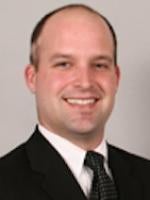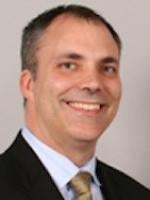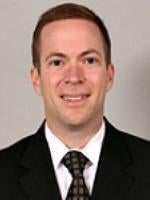In Association for Molecular Pathology v. Myriad Genetics, Inc. , the U.S. Supreme Court held that “genes,” more particularly naturally-occurring DNA sequences, isolated from chromosomes in a cell, are not patentable subject matter. Contrary to some reports in the popular press, this case was not about patenting the genes present in your body, but rather about the ability of scientists to patent DNA sequences of genes that have been isolated from their natural setting. The Supreme Court held that the claimed DNA sequences are naturally-occurring products of nature, and the steps performed by Myriad in locating, removing and sequencing the breast cancer genes BRCA1 and BRCA2 was not enough to make the naturally-occurring DNA sequences patentable.
The Supreme Court held that isolated DNA is a “product of nature and not patent eligible merely because it has been isolated.” This reverses three decades of prior decisions by courts and the U.S. Patent and Trademark Office (USPTO) that a scientist could patent isolated DNA having the sequence of naturally-occurring genes. This holding may lead to the invalidation of thousands of biotech patents.
Many are concerned that this decision, coupled with other decisions by the Supreme Court, will have a chilling effect on innovation, particularly in the areas of genetic testing and personalized medicine. Those areas depend on the use of isolated DNA based on naturally-occurring sequences, including DNA having gene mutations, as chemical reagents or tools that scientists and doctors use in tests to diagnose patients. Patents covering the naturally-occurring DNA sequences (i.e., the identified DNA sequences of genes involved in a disease or in response to a drug) provide the broadest and most straight-forward protection. Other companies that use isolated DNA as a diagnostic tool include companies that make DNA primers and probes; Myriad makes it very difficult for those companies to patent the DNA-based chemical reagents they develop and market.
Companies must carefully evaluate their patent strategies because DNA-based inventions can still be patented as long as there are sufficient changes or additions done by the inventors. For example, if a human or other gene is placed into a cell, thereby creating something new, the cell can be patented. Companies will have to come up with strategies to protect their innovations while not running afoul of the Court’s pronouncement that isolated naturally-occurring DNA is not eligible for patenting. The Supreme Court specifically held that synthetic molecules known as cDNA are patent-eligible because they do not exist in nature. It should be noted that while this distinction appears to make sense in the abstract, it draws a functional, rather than chemical, distinction that could be difficult to apply in practice. For example, a scientist may create a synthetic DNA sequence that differs from a known gene, but if it is later found that the synthetic DNA sequence is naturally present in any person’s genome, the claims directed to the synthetic DNA sequence may be invalid under the reasoning in Myriad. Moreover, under the Court’s analysis, not all cDNA molecules are patent-eligible. For example, a short strand of cDNA that is indistinguishable from natural DNA may not be patented.
In addition to the diagnostic and personalized medicine fields, the decision may impact drug development more broadly, particularly where the therapeutic molecule is a biomolecule. However, this impact may be tempered because, on its face, the decision is limited to “isolated DNA.” The Supreme Court held that the techniques for severing chemical bonds between DNA molecules were well-known, so that severing of bonds to create an “isolated” gene was not enough to transform a naturally-occurring product of nature into a patent-eligible, man-made chemical compound. There were no considerations or pronouncements regarding proteins or other types of molecules and whether the techniques for isolating or purifying them would be enough to render the molecules patentable. This creates some uncertainty as to whether other biomolecules would also be found ineligible for patent protection. On the one hand, biomolecules may also be viewed as products of nature, which are naturally produced by the body. On the other hand, the Supreme Court emphasized the “information-transmitting quality of DNA,” a function that is unique to the genome. Moreover, the Supreme Court’s opinion does not discuss the “Amazon plant analogy” that was popular during oral argument -- discovering that a molecule in a leaf of a plant found in the Amazon has medicinal purposes. Under the reasoning of Myriad, a company that extracts, isolates, and determines the structure of this molecule would not necessarily be entitled to a claim on the molecule itself. It remains to be seen how this decision will be applied to other biotechnology products, such as stem cells, antibodies or enzymes.
The Supreme Court also went out of its way to note that “this case does not involve patents on new applications of knowledge” about the genes at issue. The Court also acknowledged that claims directed to new methods of extracting or processing DNA are patent eligible. While this sounds reassuring, it is unlikely that companies developing companion diagnostics would find such claims as valuable as claims that cover the diagnostic tests themselves. Standard techniques of extracting and processing DNA have been adequate for performance of such tests. Additionally, in Mayo v. Prometheus, which was decided last year, the Supreme Court limited the ability of innovators to use method claims to patent applications of a natural law or phenomenon. Myriad does have other patent claims that were not at issue in this case. However, some of Myriad’s method claims which broadly require “comparing” or “analyzing” DNA sequences have already been held to be ineligible subject matter by the Federal Circuit based on Mayo.
Nonetheless, the Myriad decision does contemplate some ability to protect DNA-based inventions. For example, in fairly unambiguous terms, the Court held that DNA with a man-made sequence of nucleic acids is patent eligible subject matter. A man-made variant of a nucleic acid sequence remains eligible to be patented (though it must still be new, useful and not obvious based on known sequences). This holding provides companies and their patent attorneys with reasonably clear guidance for developing and protecting some types of DNA-based technology. And, again, the decision does mention the possibility of pursuing method-based claims, but because such claims were not at issue, the Court did not elaborate on the types of method claims that would pass muster.
Another question is whether language other than “isolated” might be used to differentiate natural DNA sequences in the body from those which have been identified and sequenced by a microbiologist. For example, a “purified” DNA molecule that has a naturally-occurring sequence might be viewed differently by the Court. The USPTO promptly instructed its examiners that product claims drawn solely to naturally-occurring nucleic acids or framents thereof, whether isolated or not, should be rejected. Thus, the USPTO is unlikely to be swayed by using terms different from “isolated” to cover naturally-occurring DNA sequences. The USPTO also stated it is reviewing the decision and will issue more guidance, including the role isolation plays in determining if subject matter is eligible for patenting.
After the Myriad decision, companies that develop DNA-related innovations or others related to products of nature would be wise to carefully analyze their patent strategies.






 />i
/>i

